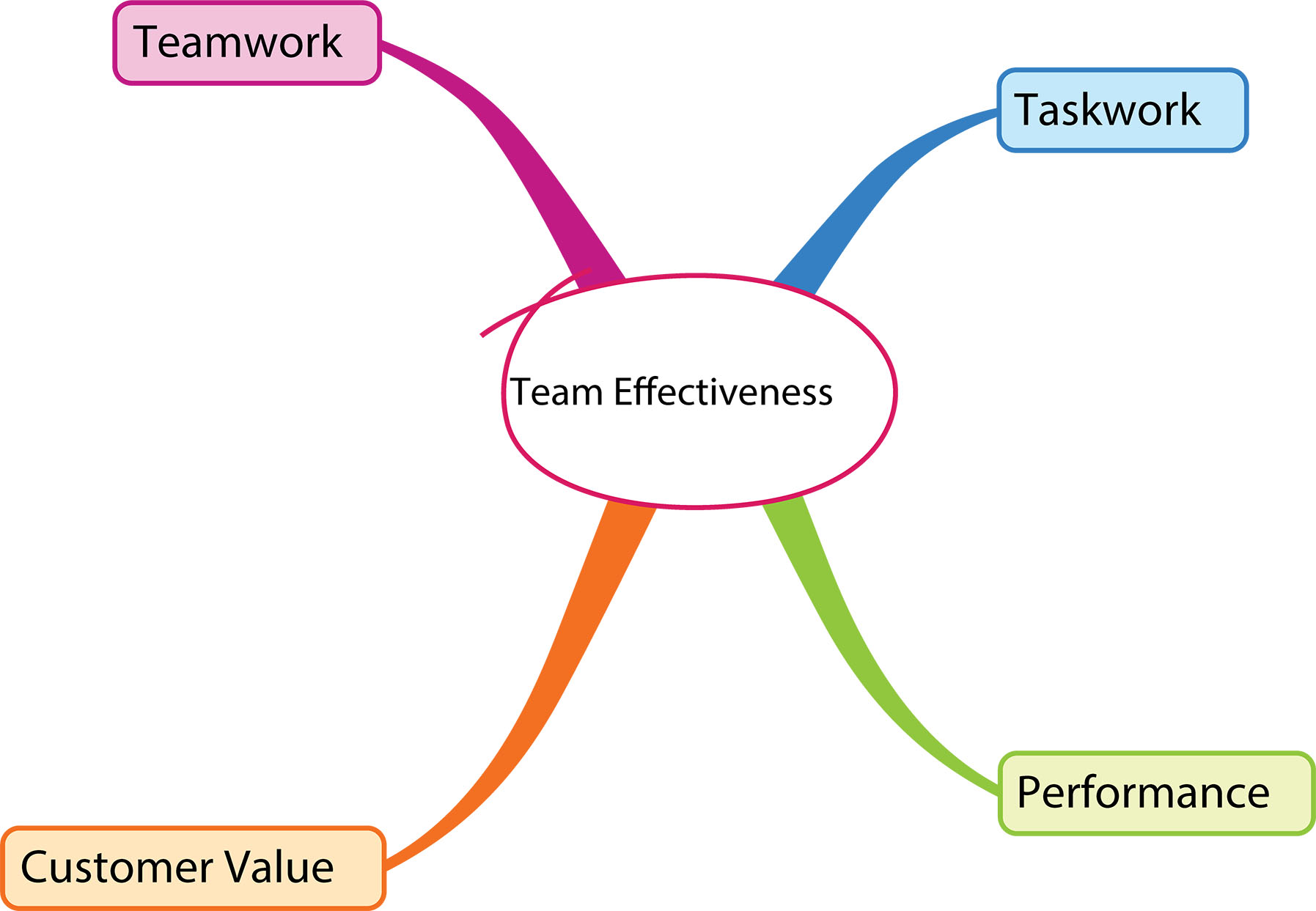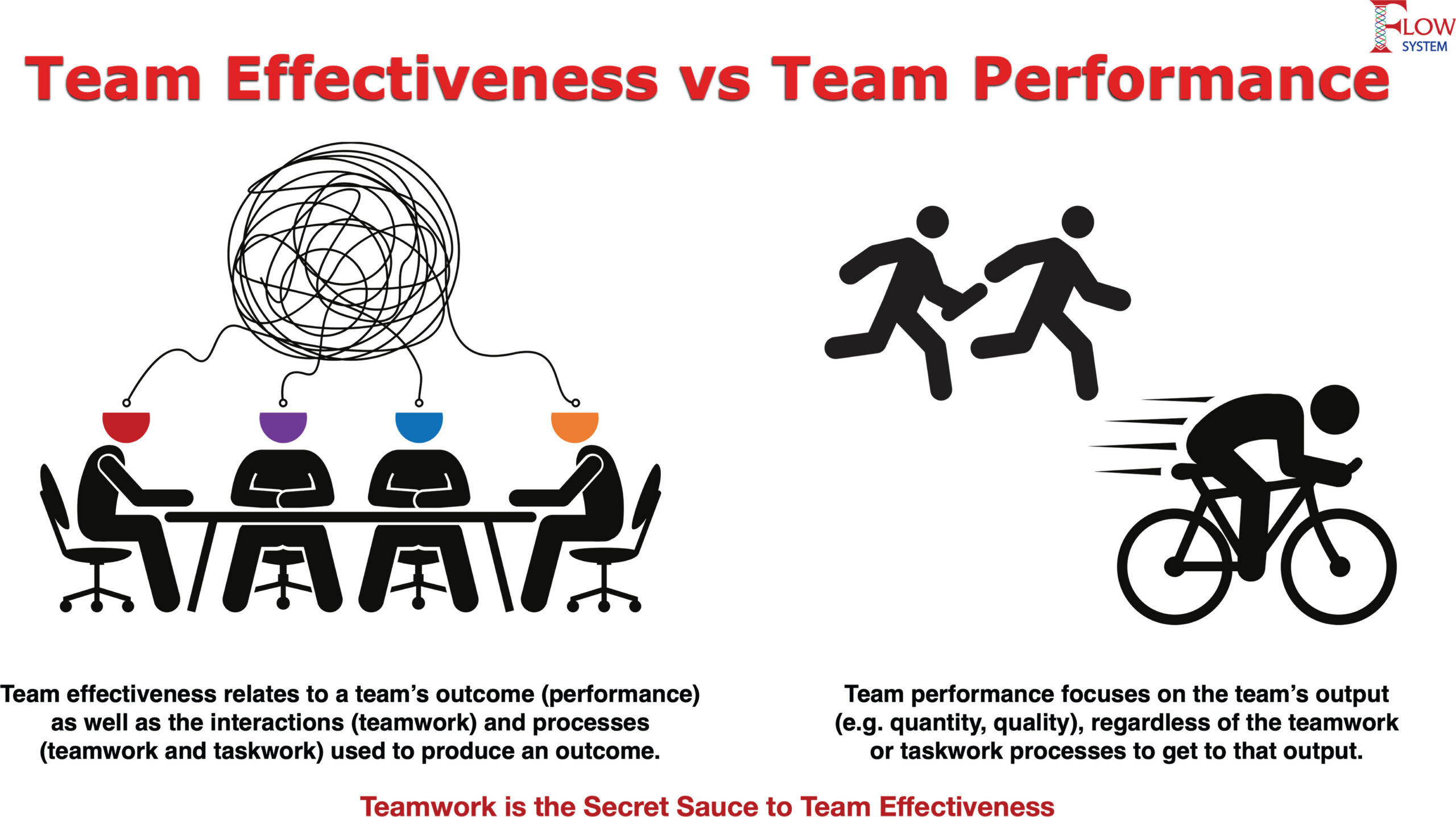TEAM EFFECTIVENESS

Team Effectiveness Definitions
The point at which the team’s processes align with external task demands. (Turner et al., 2020, p. 1; see also Kozlowski & Ilgen, 2006)
Team effectiveness is a function of:
task, group, and organizational design factors, environmental factors, internal processes, external processes, and group psychosocial traits.” (Cohen & Bailey, 1997, Abstract)
References:
Cohen, S. G., & Bailey, D. E. (1997). What makes teams work: Group effectiveness research from the shop floor to the executive suite. Journal of Management, 23(3), 239-290. https://doi.org/10.1177/014920639702300303
Kozlowski, S. W. J., & Ilgen, D. R. (2006). Enhancing the effectiveness of work groups and teams. Psychological Science of Work Groups and Teams, 7(3), 77-124. https://doi.org/10.1111/j.1529-1006.2006.00030.x
Turner, J. R., Baker, R., Ali, Z., & Thurlow, N. (2020). A new multiteam system (MTS) effectiveness model. systems, 8, 21. https://doi.org/10.3390/systems8020012

Team Effectiveness Antecedents
Teamwork – The interpersonal dynamics of team members.
Taskwork – The technical capabilities required to complete the team’s tasks.
Customer Value – The team’s customer. This could be an external or an internal customer, or both.
Performance – The output of the team.
(Turner & Thurlow, 2023, p. 557)

Team Effectiveness Formula
TE = (TW + IP) + TK (TP + AP) + PF + CV
TE stands for team effectiveness as a function of taskwork, teamwork, performance (outcome measure), customer value, and team member satisfaction.
TW relates to teamwork skills, shared behaviors, attitudes, and cognitions.
IP represents the interpersonal processes, conflict management, motivation, and confidence-building skills (Marks et al., 2001).
TK is for transition processes (Marks et al., 2001). These include mission analysis, goal specification, strategy formulation, and planning activities.
AP is for action processes (Marks et al., 2001). These include monitoring and coordinating activities.
PF is for performance. Often represented as some measure of quality, quantity, or time.
CV is for customer value. Customer satisfaction, internal and external of the team, and team member satisfaction.
(Turner & Thurlow, 2023; Turner et al., 2020)
References:
Marks, M. A., Mathieu, J. E., & Zaccaro, S. J. (2001). A temporally based framework and taxonomy of team processes. Academy of Management, 26, 356-376. https://doi.org/10.5465/amr.2001.4845785
Turner, J. R., & Thurlow, N. (2023). The Flow System Playbook. 3 Helix Publishing.
Turner, J. R., Baker, R., Ali, Z., & Thurlow, N. (2020). A new multiteam system (MTS) effectiveness model. systems, 8, 21. https://doi.org/10.3390/systems8020012